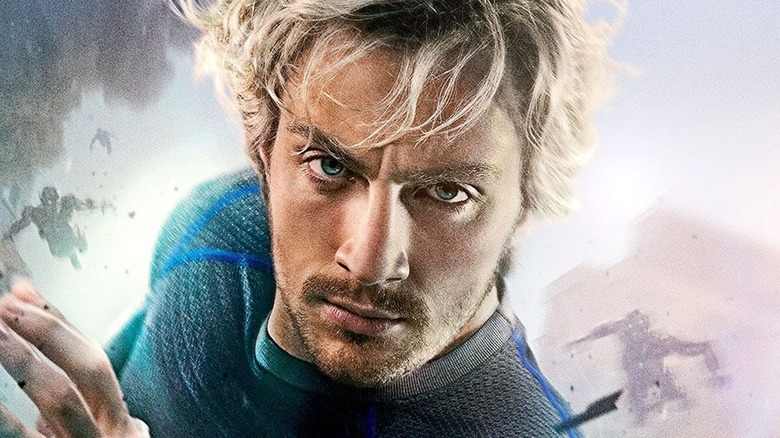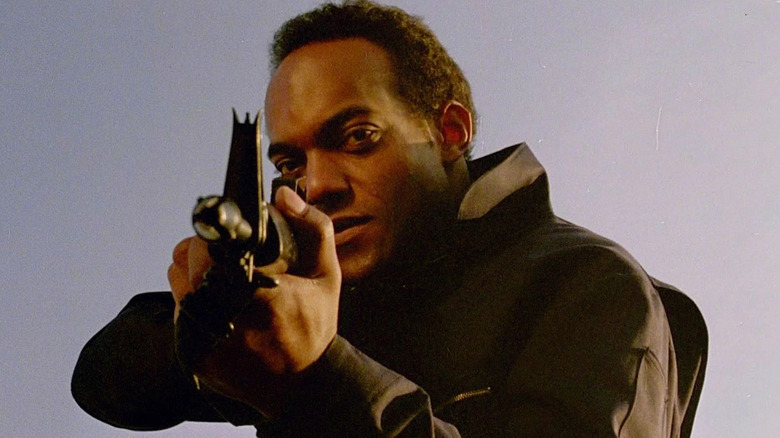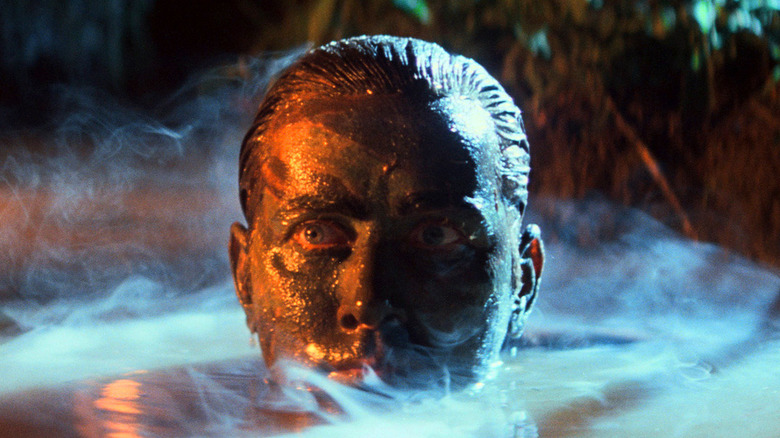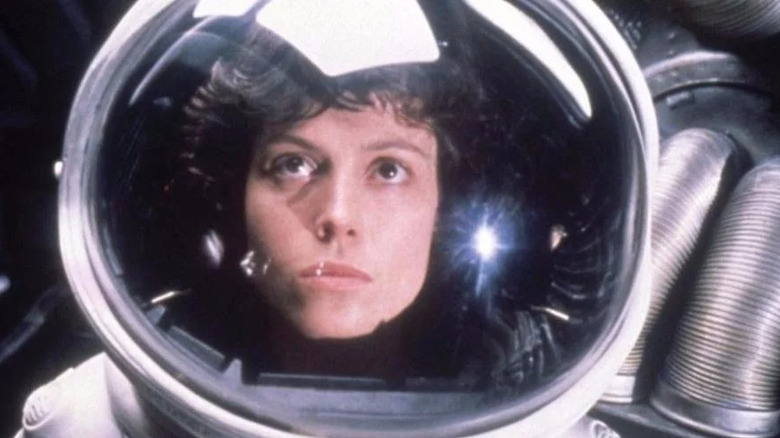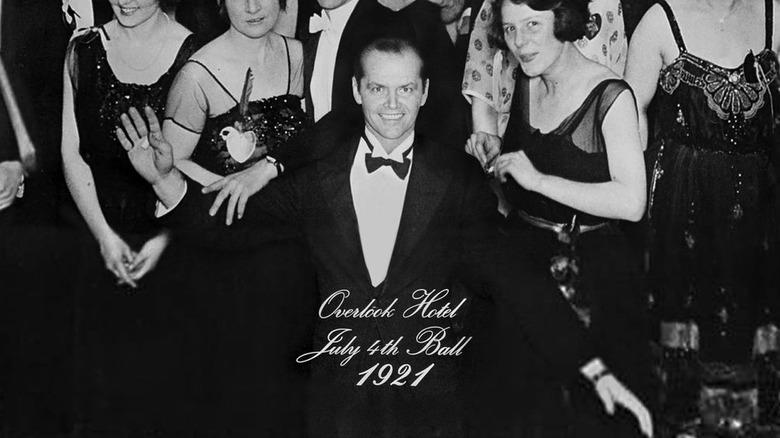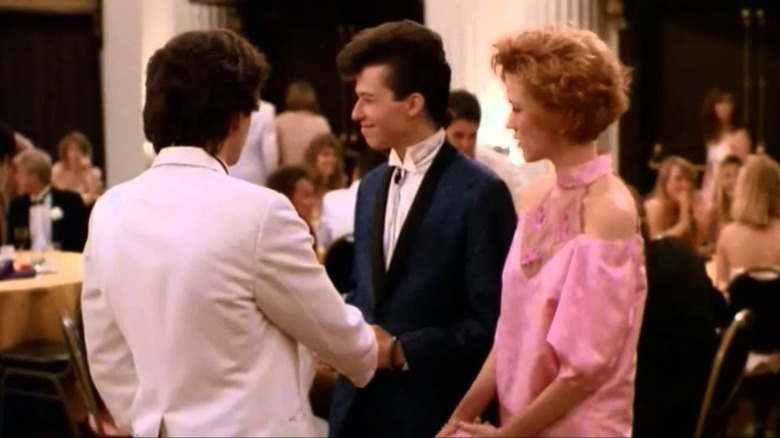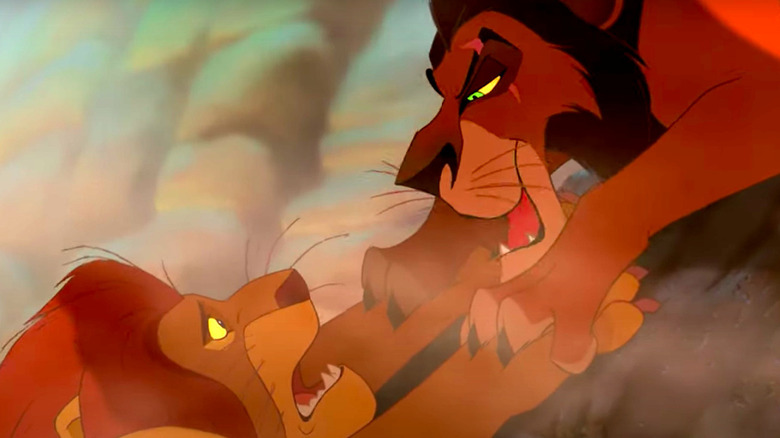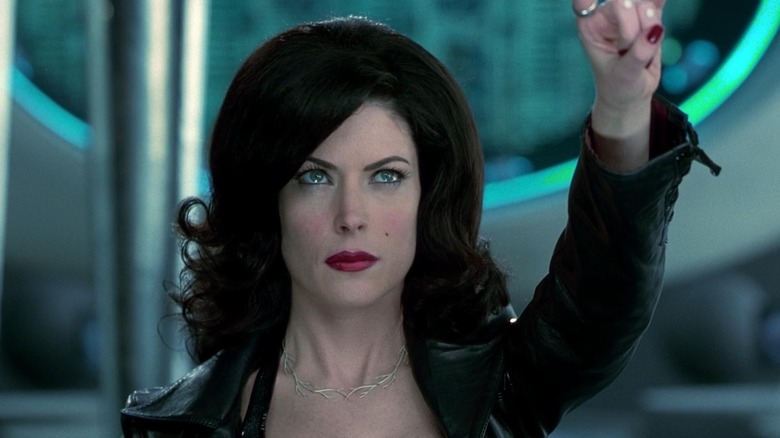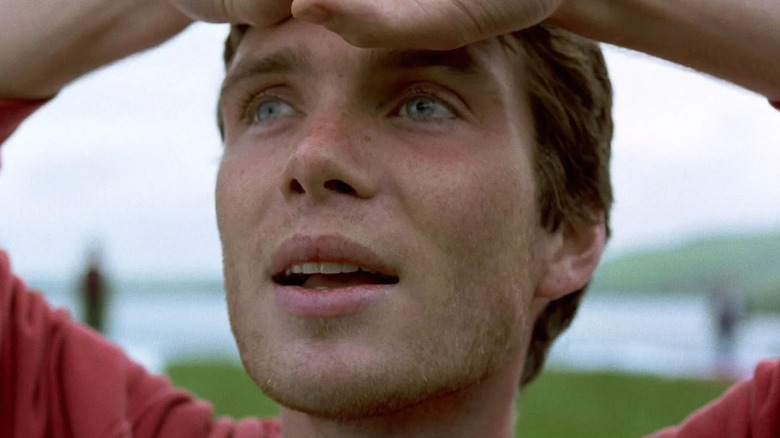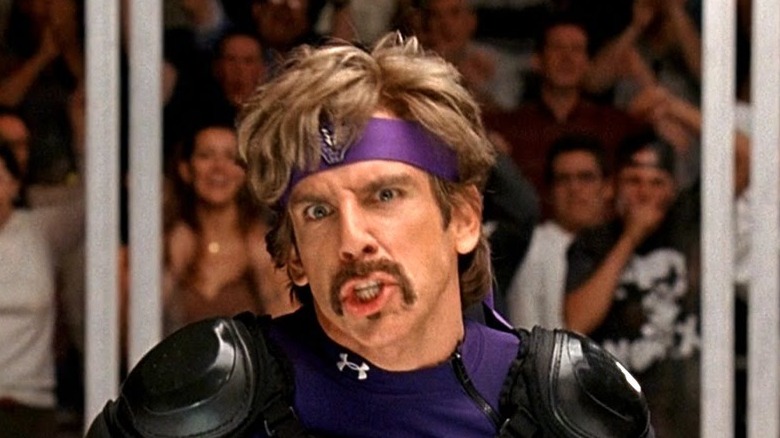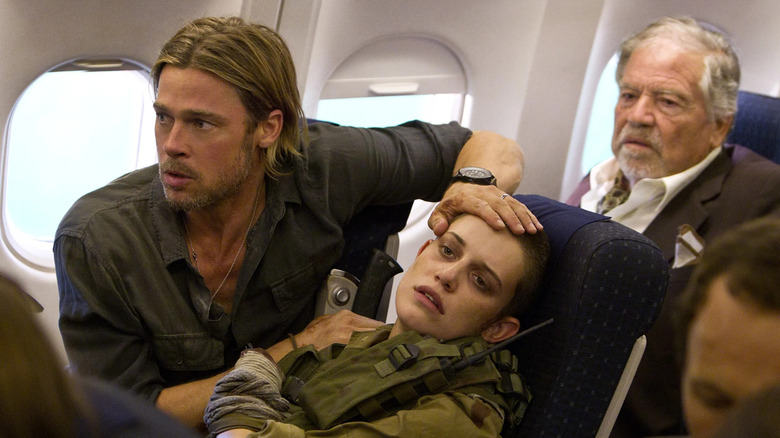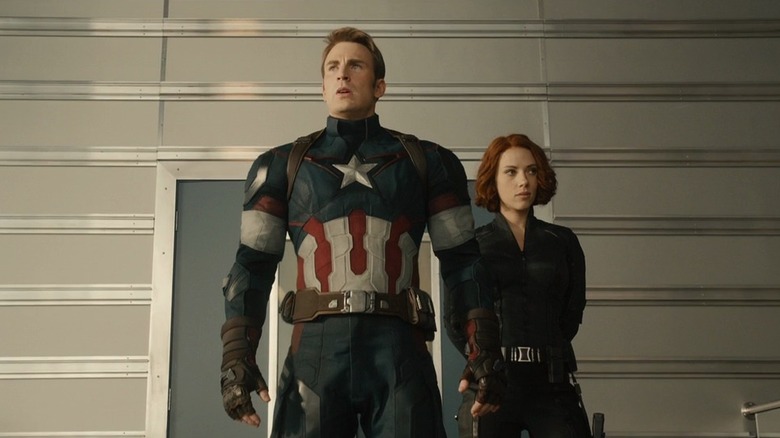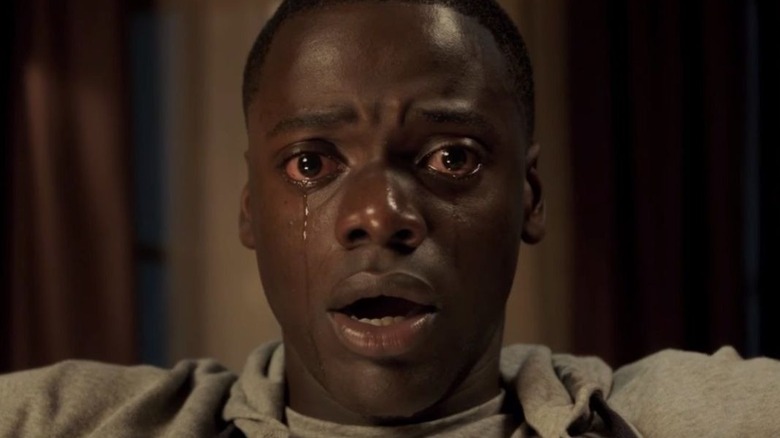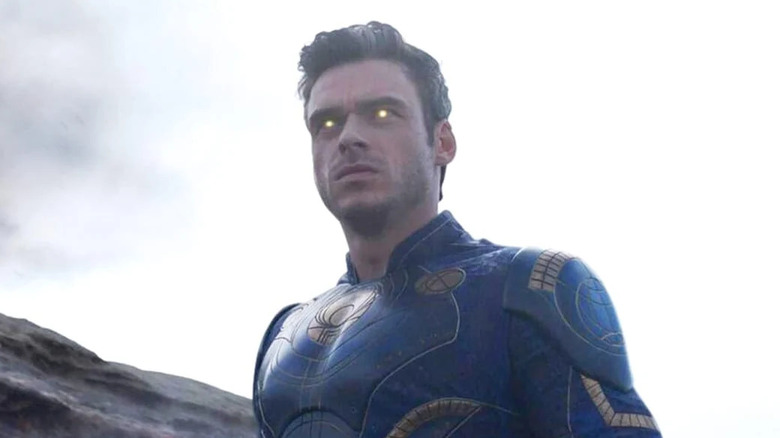Alternate Movie Endings That Nobody Has Seen
Movie-making is a complicated endeavor, with plenty of behind-the-scenes changes and creative compromises dependent on studio input, test audience reactions, and logistical challenges. This means that just because a movie's intended ending may be written, or even filmed, it may not be the conclusion that is used for the final cut. This has led to a whole set of original endings being discarded, either being shelved in favor of reshot sequences or never even progressing beyond a shooting script prior to extensive rewrites.
Here are the major alternate endings behind the biggest fan-favorite movies, from mid-production changes in superhero blockbusters to cinematic love stories that swapped out its intended coupling. These endings could have completely changed the trajectory of these movies, with the ending scene either making or breaking the cinematic legacy of each story and providing a look at what could have been.
Dawn of the Dead had no survivors
In 1978, filmmaker George A. Romero returned to the zombie horror he revolutionized with "The Night of the Living Dead," for its superior sequel "Dawn of the Dead." The movie focused on four survivors sheltering at a local shopping mall as the world is overwhelmed by hordes of undead with a ravenous hunger for human flesh. By the film's end, the mall is similarly overrun, with the last two survivors, Peter and Francine, escaping from the site onboard a helicopter.
The shooting script for "Dawn of the Dead" had no one making it out of the mall alive, with film ending with Peter and Francine each taking their own lives rather than be eaten. Peter was to have shot himself while Francine would stick her head in the helicopter's whirling blades, a mock dummy to perform the shot prepared. However, Romero felt that this bleak conclusion was a step too far and rewrote a more hopeful ending during production, using this instead.
Apocalypse Now's explosive ending
"Apocalypse Now" is filmmaker Francis Ford Coppola's searing dive into the darkly surreal nature of the Vietnam War while serving as a loose adaptation of Joseph Conrad's "Heart of Darkness." The American military dispatches a small squad led by Captain Willard to assassinate rogue Colonel Walter Kurtz, who commands his own splinter faction in Cambodia. In the finale, Willard decides to see his mission through and singlehandedly cuts Kurtz down before departing from his compound forever.
The troubled production of "Apocalypse Now" has become something of an industry legend itself, chronicled in the award-winning documentary "Hearts of Darkness: A Filmmaker's Apocalypse." Among the changes made amidst the turbulent production, mentioned by screenwriter John Milius, was for Willard and Kurtz to join forces and go down fighting during an attack on the compound. This was dropped in favor of a more positive ending, and one that didn't require actor Marlon Brando to play a more physical role as Kurtz.
Alien's original ending killed Ellen Ripley
Ridley Scott's "Alien" expertly blended science fiction and horror, as the ill-fated crew of the Nostromo found themselves picked off one-by-one by a ravenous xenomorph lurking on their ship. The 1979 film had protagonist and sole survivor Ellen Ripley self-destruct her ship and escape in a shuttle only to discover the xenomorph had followed her onboard. In a desperate, final act, Ripley manages to eject the monster outside the shuttle before blasting it with the engines, destroying the creature for good.
Scott intended to end "Alien" with a scene where the xenomorph actually emerged victorious and killed Ripley. In the unused ending, the xenomorph would have ripped off Ripley's head and recorded a ship's log in the shuttle in the voice of the Nostromo's captain Dallas as it cruised for more prey. This ending was nixed by the studio executives overseeing the film, who threatened to fire Scott unless a more triumphant, uplifting ending was used.
The Shining's cut epilogue
While author Stephen King has publicly aired his reservations about it, the 1980 film adaptation of his novel "The Shining" is widely regarded as a horror classic. While caretaker Jack Torrance and his family maintained the Overlook Hotel during the remote resort's snowy off-season, the evil spirits infesting it possessed Jack. Corrupted and murderously turned against his family, Jack pursues his young son Danny in the hotel's hedge maze, freezing to death while Danny escapes with his mother Wendy.
A week after the preview screening in New York, filmmaker Stanley Kubrick had (per the Monthly Film Bulletin) theater projectionists trim a two-minute epilogue from prints of the movie and sent back to Warner Bros. The epilogue had hotel manager Stuart Ullman visit Wendy and Danny as they recover at a hospital, explaining to them that Jack's body was never found. Those that saw the initial cut were divided by the questions raised by the epilogue, with Kubrick feeling the movie worked better without the denouement.
Pretty in Pink's original couple
One of the most memorable teenage coming-of-age movies from the 1980s is "Pretty in Pink," written by prolific filmmaker John Hughes. At the film's core is a love triangle between protagonist Andie Walsh, her misfit best friend Duckie Dale, and the preppy popular kid Blane McDonough. As the trio head to their senior prom, Duckie gives Andie his blessing to pursue Blane while he moves on to find love elsewhere, with the movie ending as Andie and Blane kiss.
However, "Pretty in Pink" was originally intended to feature Duckie and Andie embarking on a full-fledged romance that blossomed at the prom, with Blane left behind. After the test audiences reacted negatively to this ending, Hughes wrote a new ending which was filmed on a single day months after principal photography wrapped. Though actor Jon Cryer felt this undercut the story's natural arc, co-star Molly Ringwald agreed with the decision to fulfill the movie's Cinderella story premise.
The Lion King burned Scar alive
From its enormous box office earnings to its Tony Award-winning stage musical adaptation, "The Lion King" is one of the most successful properties to come out of Disney. Simba, the heir to lead a lion pride across the African Pride Lands, is exiled for years after his evil uncle Scar murders Simba's father Mufasa and seizes the throne. In the 1994 film's finale, Simba confronts Scar in a duel as a raging wildfire spreads, with Scar consumed by his own pack of hyenas.
In an alternate ending, Scar actually triumphs in his duel against Simba, flinging his nephew off of Pride Rock as the animal kingdom burns below. As Scar laughs maniacally at defeating this challenger to his authority, he is horrifically burned to death while a surviving Simba can only watch. This ending remains only as a narrated storyboard, being far too dark to make it into the final film and replaced by an ending where Simba is the clear victor and Scar is killed largely off-screen.
Men in Black II's epic final battle
"Men in Black II" featured the return of Will Smith's Agent J, who decides to recover his original partner Agent K from the latter's self-imposed retirement to take on a new extraterrestrial threat. The shape-shifting alien Serleena arrives in New York City, indenting to use a hidden power source to conquer the cosmos and destroy Earth. This culminates in an epic battle in the skies over Manhattan before J and K manage to defeat Serleena for good.
The original ending to "Men in Black II" took place in front of the Twin Towers. Following the tragic terrorist attacks on the World Trade Center on September 11, 2021, while the film was in the middle of principal photography, this ending was reshot without this location out of respect (per Digital Media FX). In addition, all shots including the World Trade Center were similarly edited or reshot to remove the Twin Towers from view.
28 Days Later kept killing its hero
Director Danny Boyle and screenwriter Alex Garland Turned the zombie horror genre on its head with their 2002 post-apocalyptic movie "28 Days Later." Though the infected in the story aren't technically undead, they remain just as terrifying as ever, driven by pure rage to kill anyone uninfected in their path as they sweep across Great Britain. 28 days after the initial outbreak, a young man named Jim awakens in a hospital and struggles to survive with the new friends he makes along the way.
While the theatrical ending to "28 Days Later" concludes with Jim and his fellow survivors being spotted by the Finnish military, setting up their rescue, alternate endings featured a grim fate for Jim instead. In one ending, existing only as an animatic, Jim provides the infected Frank with a complete blood transfusion, sacrificing his life to cleanse Frank so he can recover with his daughter. The scene mirrors the opening scene to the film, with Jim left alone in hospital similar to how he woke alone in one at the end of the world.
Dodgeball: A True Underdog Story let the pirate save the day
2004's "Dodgeball: A True Underdog Story" featured stars Ben Stiller and Vince Vaughn at the height of their comedic powers, hilariously trading barbs in the film's core rivalry. In the movie, Vaughn portrays the unassuming slacker Peter LaFleur, who owns Average Joe's Gym, while Stiller plays the testosterone-fueled egomaniac White Goodman, owner of the corporate Globo Gym. The ownership of Peter's gym ends being settled in a high-stakes dodgeball tournament, with Peter leading a motley crew of misfits while White heads his physically immaculate team.
The film's theatrical ending has Peter and White facing off in a sudden death duel to close out the tournament after White accidentally commits a penalty, resulting in Peter winning and publicly humiliating White. In an early cut of "Dodgeball," the penalty was never committed and Globo Gym won the tournament, with Steve the Pirate saving the day with a surprise cash supply in an unseen scene. Filmmaker Rawson Marshall Thurber elaborates on this in the commentary (per Film School Rejects), with Steve intended to save Peter's finances after recovering stolen loot instead, explaining why the prize money was delivered in a treasure chest in the film.
World War Z's explosive cinematic battle
"World War Z" starred Brad Pitt as a United Nations investigator Gerry Lane, who finds himself caught in a zombie outbreak sweeping across the globe. The 2013 film ended with Gerry traveling to Wales to develop a vaccine that camouflages uninfected humans from the hordes of ravenous zombies. However, behind-the-scenes issues during production led to several radically different endings than the final film, with several proposed endings leaning heavier into action.
According to Vanity Fair, "World War Z" had a troubled development history, including a revolving door of screenwriters being brought on to the project. Writer Matthew Michael Carnahan scripted an ending that saw Gerry persuade North Korea to invade the United States in order to root out the zombies overrunning the continent. A major climactic battle that saw Gerry and his fellow humans face hordes of zombies in Moscow's Red Square was scrapped in favor of a quieter ending that better fit Gerry's character.
Avengers: Age of Ultron nearly spared Quicksilver
One of the first major superhero deaths to stick in the Marvel Cinematic Universe is Quicksilver, with the speedster heroically sacrificing his life in "Avengers: Age of Ultron." While striking up a high-speed rivalry with Hawkeye for most of the film, Quicksilver moves the Avenging Archer and a child out of a hail of gunfire, resulting in his own death. And though filmmaker Joss Whedon intended to kill off Quicksilver to underscore the movie's stakes, he filmed an unused ending sparing the Avenger to cover his bases just in case.
Whedon revealed to Empire (via CinemaBlend) shot scenes of Quicksilver surviving the multiple gunshot wounds he endured from Ultron along with a concluding scene of the speedster joining the new Avengers team back in America. Whedon also intended this scene to include Captain Marvel and Spider-Man, even going as far to film visual effects plates with a stand-in for Carol Danvers. However, with Marvel Studios and Sony's Spider-Man licensing agreement not yet finalized and Marvel Studios President Kevin Feige feeling Captain Marvel deserved a full debut instead, both heroes were similarly dropped.
Get Out gave its villains the last laugh
After years starring and co-helming the Emmy Award-winning comedy series "Key & Peele," filmmaker Jordan Peele pivoted to the genre for his feature directorial debut "Get Out." The movie follows a young Black man named Chris who meets his girlfriend's family, only to find her community has been kidnapping Black people and implanting their consciousnesses into their bodies in a twisted bid for immortality. Chris manages to escape and kill his captors, including his girlfriend, before being picked up by his TSA agent friend Rod to leave the community behind for good.
Another ending contemplated by Peele involved Rod arriving in town only to find Chris' body already taken over by someone in the community. This was one of several ideas considered during production. Eventually, Peele decided that a happier ending should be utilized instead, with Rod's arrival still providing the real world tension in the finale.
Eternals almost reset its heroes
"Eternals" follows a group of relatively immortal beings, living among humanity for millennia to hunt down the monstrous Deviants. Believing themselves to be in service to the cosmic Celestials, the Eternals discover they are preparing Earth and its resources to be consumed for the birth of a new Celestial. The Eternals face off against their champion Ikaris to preserve all life on Earth by ensuring this new Celestial's emergence remains incomplete.
Filmmaker Chloé Zhao revealed that the original ending featured the Eternals returning to their Celestial spacecraft, having their memories erased before heading off to another planet. This would seemingly suggest that the Eternals remained trapped in their cycle of sacrificing planets to create new Celestials rather than breaking free of their programming. Zhao observed to Empire this ending felt "bleak" and didn't build up enough excitement for future MCU projects, replacing it with a more hopeful ending instead.
